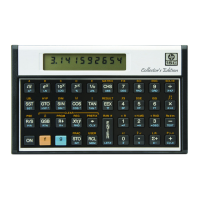Introduction vii
41C, were usually tied to a short period of use before needing to be plugged
into an outlet and recharged due to those lovely, but power-hungry red LED
displays. If only there were a way to _ that problem!
HP solved that problem on the remaining
models with the introduction on
September 1, 1981, of their new slimline
series of calculators, codenamed
Voyager, beginning with the HP-11C and
HP-12C. While the HP-11C was
discontinued in early 1989, the HP-12C
became such a standard in the financial
sector that it has been continuously sold
for over 41 years as of this writing.
Ten months after the HP-11C and HP-12C, HP introduced the HP-15C and the
HP-16C on July 1, 1982—two new models with the same shape and size.
The HP-16C was aimed at systems programmers and appropriately named
the “Computer Scientist” by HP. The brochure for this model began: “The
most powerful calculator ever designed for computer science and digital
electronics applications” and that it was. The HP-16C had four number bases
(binary, octal, decimal, and hexadecimal), four Boolean operators (AND, OR,
XOR [Exclusive OR], and NOT),
extensive bit manipulation abilities,
and variable word size (up to 64 bits),
plus one’s and two’s complements.
An example in the HP-16C Owner’s
Handbook included a program to
convert between IEEE standard
floating-point binary format and the
floating-point decimal format used in
the HP-16C itself. Programming
abilities included a maximum of 203 program lines or 101 16-bit data
registers, in addition to 16 program labels, 4 levels of subroutines, 6 flags,
and 8 conditional tests. It is still in high demand in its niche on the used
market…if you can find one!
HP-12C
HP-16C

